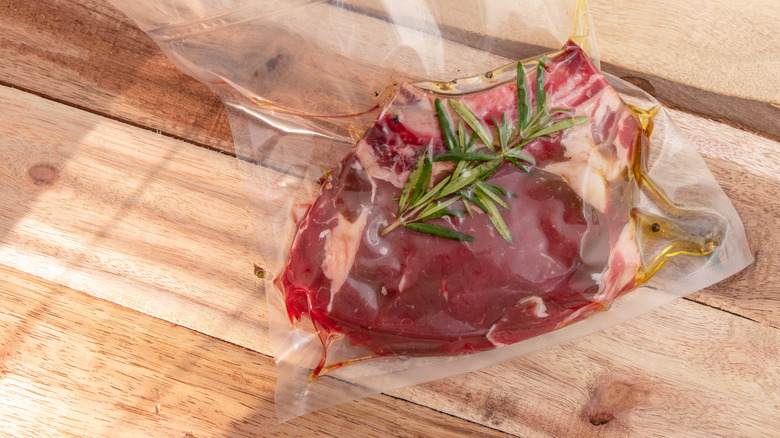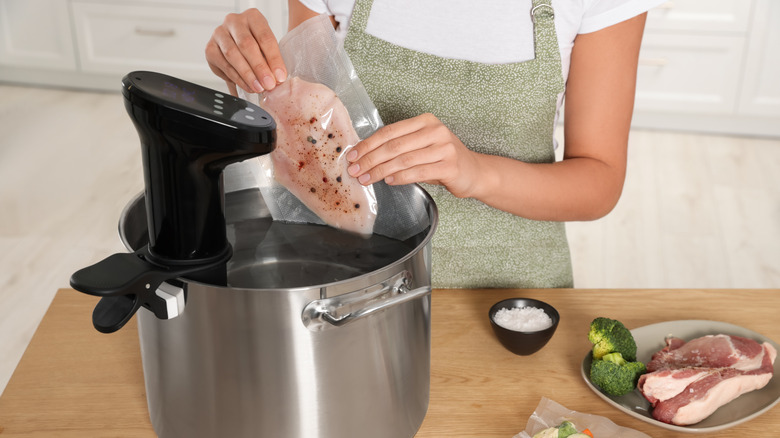The Biggest Mistake People Make When Cooking Sous Vide
A sous vide machine is a wonderful piece of culinary equipment that makes getting consistent results a breeze for home cooks. With just four basic steps required to cook sous vide properly, these machines are easy to use and increasingly affordable. Even so, some people still aren't quite sure how to use them. We turned to Matt Kreider, executive chef of Steak 954, for tips on how to effectively operate these machines.
Kreider believes that some people approach a sous vide machine with the wrong mindset. "I think some people don't think of this process as a science, and it is," he says. "Specific times and temperature will yield consistent results. Don't just wing it or go by a feeling." Using a sous vide machine without specific times and temperatures in mind won't get you the little extra char or more moisture you're hoping for. Too long or too hot and your ingredients fall apart, too short or too low and they'll be undercooked.
Precision is the name of the sous vide game. "Be exact with what you do, and you will have the same product every time," Kreider tells us. "It adds a consistency not often found in traditional home cooking." Consistency is one of the main goals of any commercial kitchen, and sous vide machines let home cooks achieve that with far less training and knowledge. But you have to know how to properly use one first.
How to perfectly cook sous vide
The first step is to determine what level of doneness you want your final product to be. Exact temperatures are often the easiest part to figure out; simply find out the internal temperatures for rare to well-done for meats. Kreider recommends exploring the vast amount of resources online dedicated to sous vide cooking.
Timing, however, is more flexible. For example, to cook a single filet mignon sous vide to medium-rare, you only need an hour at 129 degrees Fahrenheit. But that only accounts for the meat, not any intramuscular fat or connective tissues that may be present. While these may melt and break down at that temperature, they need an extra hour or two to turn into pure flavor. You must also account for the thickness of any meat as this is one of the biggest determiners of how long it needs to be in the sous vide.
A sous vide can exactly control an ingredient's temperature, but it can't provide a flavorful crust. When you place your ingredients into the machine, you'll need to account for the slight increase in temperature that occurs when you finish them off in a pan or on the grill. To incorporate this into your plans, it's recommended that you sous vide cook your food to slightly below your desired temperature. This is especially important for something like sous vide burgers, which get a ton of extra flavor from a good sear after their sous vide cook.


